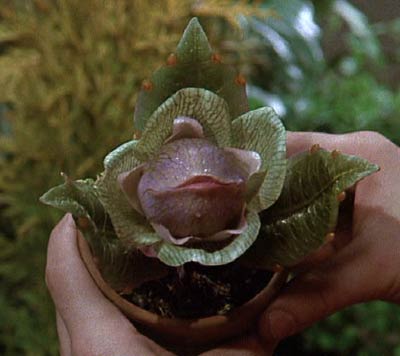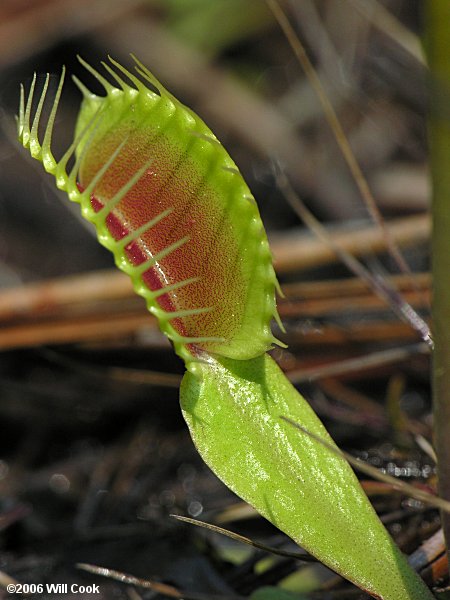 The 1960 movie Little Shop of Horrors became a cult classic, and in 1986, it became a Broadway musical by the same name. Audrey 2, the featured creature, was modeled after the famed North Carolina plant, the Venus Flytrap.
The 1960 movie Little Shop of Horrors became a cult classic, and in 1986, it became a Broadway musical by the same name. Audrey 2, the featured creature, was modeled after the famed North Carolina plant, the Venus Flytrap.Any child who has ever examined the Venus Flytrap will convince you that the plant has a demonic mind that makes it capture insects and eat them. The fictional Audrey 2 re-enforced that concept when she could only be fed with blood in order to survive.
In reality, the Dionaea muscipula is classified as a carnivorous plant that catches and digests animal prey through the use of sensitive hairs that trigger the plant to close its leaves. Digestion provides nutrients that the plant needs.
 The native plant is found only in North and South Carolina bogs and wetlands within a 60-mile radius of Wilmington, NC. Other places have managed to cultivate the flytrap which thrives where the nutritional poverty of the soil is severe. They are generally difficult to grow and take up to five years to mature into a healthy plant.
The native plant is found only in North and South Carolina bogs and wetlands within a 60-mile radius of Wilmington, NC. Other places have managed to cultivate the flytrap which thrives where the nutritional poverty of the soil is severe. They are generally difficult to grow and take up to five years to mature into a healthy plant.Other plants have human characteristics that are intriguing. Ancient Greeks studied these types of plants, and during the 19th century, scientists actually thought the some plants had nerve and muscle tissue similar to that of animals.
We were visiting the Farmers’ Market in Raleigh a few weeks ago. Full of vegetables and plants of all types, it is one of my favorite places to visit. I always learn something and never leave empty handed.
My husband reached over and touched one of the small plants sitting on the shelf where we were browsing. Instantaneously, the plant folded its leaves toward each other, seemingly in an effort to protect itself from the invader. I was startled. The plant was a Mimosa pudica or mimosa plant which had leaves similar to those found on the mimosa tree.
Other species known by names such as the sensitive plant, tickle-me-plant, touch-me-not, and the humble plant fascinate people with their ability to move. Although we were taught that only animals can change location, some plants seem to move when stimulated by touch, light, or gravity.
Some plants have a survival reaction that causes them to droop, therefore making themselves look unattractive when stimulated by a possible predator that might want to eat them. Phototropism is growth toward light which occurs because the tips of the plant have a pigment that is sensitive to light.
Simply put, the cells in plants undergo changes because of a plant hormone which activates modifications in the plant cells themselves, or they move because of sensors in the plant.
If you would like to study more diagrams and explanations, Bernie’s Basics at www.abc.net.au has lots of detailed information about the plant movement topic.
Watch out for those plants because they might be watching you!
No comments:
Post a Comment